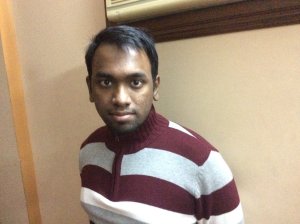The last time Meer Sameh Mobasheer’s family saw him, he was walking out the door, munching on popcorn as he headed to an examination preparation class.

That was February 29.
For four months, the family looked for him, considering and dismissing scenario after scenario: Maybe he ran away. Maybe he fell in love and eloped. Maybe he was kidnapped.
Through it all, Mobasheer’s family worried about another possibility: Maybe he was recruited by Islamists. On Saturday, family members learned their worst fear had become reality.
Relatives showed them a picture of Mobasheer posted on an ISIS-affiliated site that identified him as one of the attackers in the deadly attack on the Holey Artisan Bakery in Dhaka.
“That’s not my son, that’s not my son,” Meer Hayet Kabir said. “He was full of humanity.”
The wound from the deadliest hostage standoff in Bangladesh’s history is still raw. Revelations about the hostage takers has opened another one.
Unlike the spate of attacks that has plagued Bangladesh in recent months, the siege at the popular cafe wasn’t carried out by economically disenfranchised, Islamic school-educated attackers.
Most of them were young men from upper middle class families. They went to private schools. They navigated a secular world with ease and willingness.
“They were normal, regular guys who hung out at cafes, played sports, had Facebook pages,” said Faiz Sobhan of the Dhaka-based think tank Bangladesh Enterprise Institute.
What went wrong?
The families — and city residents — are now left wondering what went wrong and where.
What made the attackers — all of whom were Bangladeshi citizens — kill 22 people Friday at the popular cafe in Dhaka’s diplomatic enclave?
Kabir said theirs is an upper middle class family — he’s an executive in a telecommunications company — who identified as Muslim but not devoutly so.
Mobasheer was always interested in religion, and his family didn’t discourage his curiosity in his faith.
Instead the father gave Mobasheer an English translation of the Quran. He wanted the son to explore the tenets of Islam directly from its source, not through a warped interpretation elsewhere.
But Kabir said his 18-year-old son was impressionable, and he didn’t have too many friends.
These factors may have proved opportune for Islamist recruiters, the family believes.
“I don’t know what they said to him exactly,” he said. “But I believe they took advantage of his self-esteem issues and Islamic faith, gave him a sense of belonging.”
Risk factors
So far, officials have released the names of five attackers. A sixth survived but is in too critical condition to be interrogated.
Like Mobasheer, Nibras Islam and Rohan Imtiaz also went to private universities where the primary language of instruction is English.
And like Mobasheer, they, too, were reported missing by their families for months before Friday’s attacks.
The fourth name authorities released is that of Khairul Islam Payel. Officials say he is a day laborer who went to an Islamic religious school.
The final person officials identified as taking part in the carnage is Saiful Islam Choudhury. But the owners of Holey Artisan bakery believe that’s a mistake. Choudhury was a cook at the restaurant.
Not a surprise
While some were stunned to see three men from upper middle class families on the list of attackers, it’s not altogether surprising to experts.
Youth, wealth and education are the three biggest risk factors associated with violent radicalization, according to a study by Queen Mary University of London.
Whether it is foreign fighters who have flocked to join the group in Iraq and Syria, or homegrown attackers who pledge allegiance online, ISIS members have defied stereotypes of just who is at risk of radicalization.
Computer scientist Zeeshan ul-hassan Usmani analyzed thousands of online profiles of current and potential ISIS recruits. He told CNN last year that contrary to popular belief, recruits from Europe and the United States are far more likely to be educated and come from middle or upper class families.
ISIS ties
Even though ISIS has claimed responsibility for the bakery attack, Bangladeshi Information Minister Hasanul Haq Inu said it’s more likely the work of Jamaatul Mujahideen Bangladesh, or JMB, a jihadist group whose attacks have focused on religious minorities.
“As of this moment, we can safely say that they are homegrown terrorists. They are members of a local domestic terrorist network,” he said.
Inu said there’s no evidence the two groups are linked.
But that, Sajjan Gohel said, is a distinction without a difference.
“JMB are ideologically affiliated with ISIS; there’s no ambiguity about it. JMB has sworn allegiance to ISIS,” said Gohel, international security director of the think tank Asia Pacific Foundation.
In an interview Monday with CNN, Inu said investigators are looking into whether Pakistan’s intelligence agency played a part in the plotting.
Pakistani diplomats have been thrown out of Bangladesh in the past, he said, after ties with terrorist organizations were discovered.
Bangladesh used to be a part of Pakistan before a bloody civil war led to its independence. There’s been little love lost between the two nations since then.
In a statement Monday, Pakistan’s Ministry of Foreign Affairs sharply denied the allegations, calling them “utterly baseless and unfounded.”
“These are highly regrettable, irresponsible and provocative stories,” the statement said.














